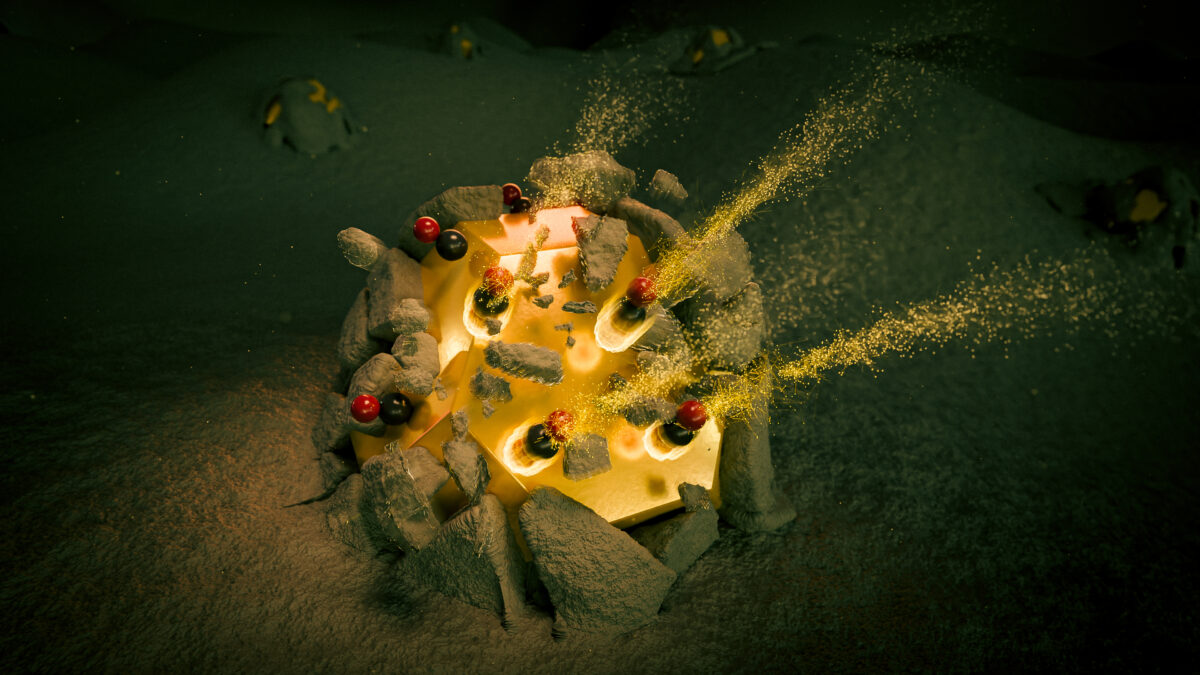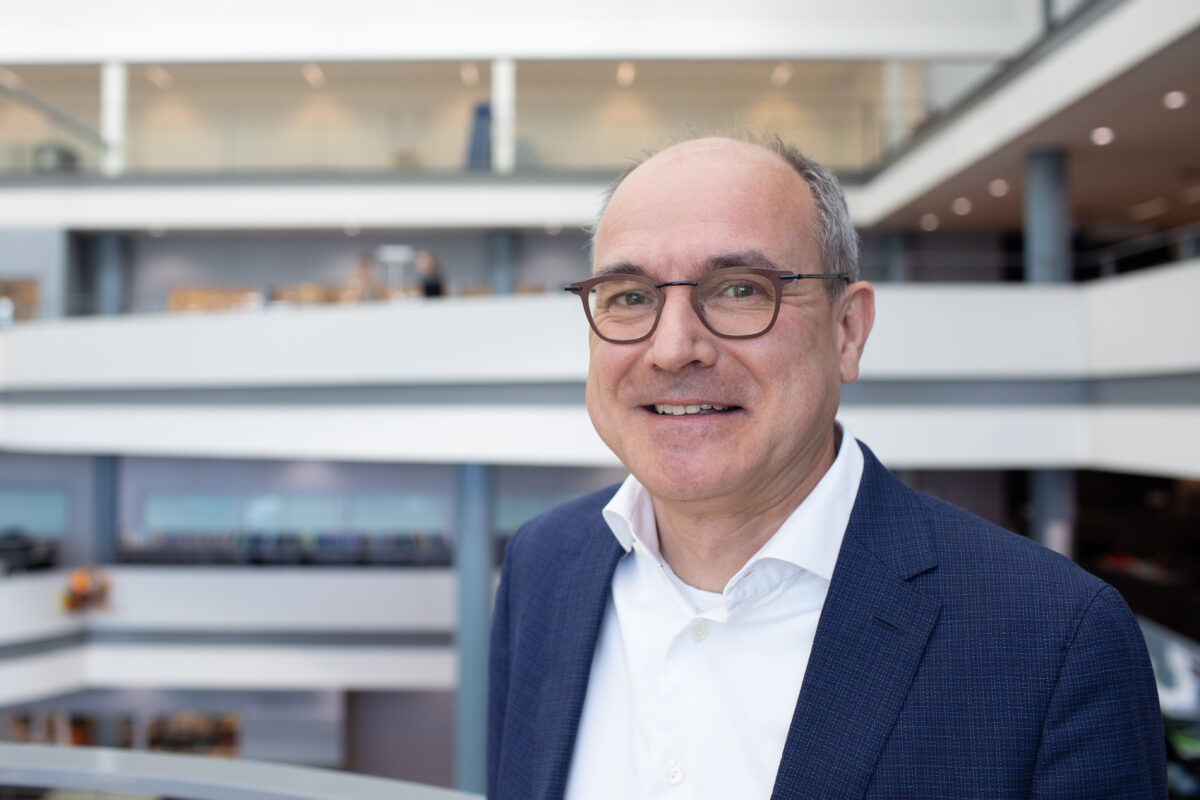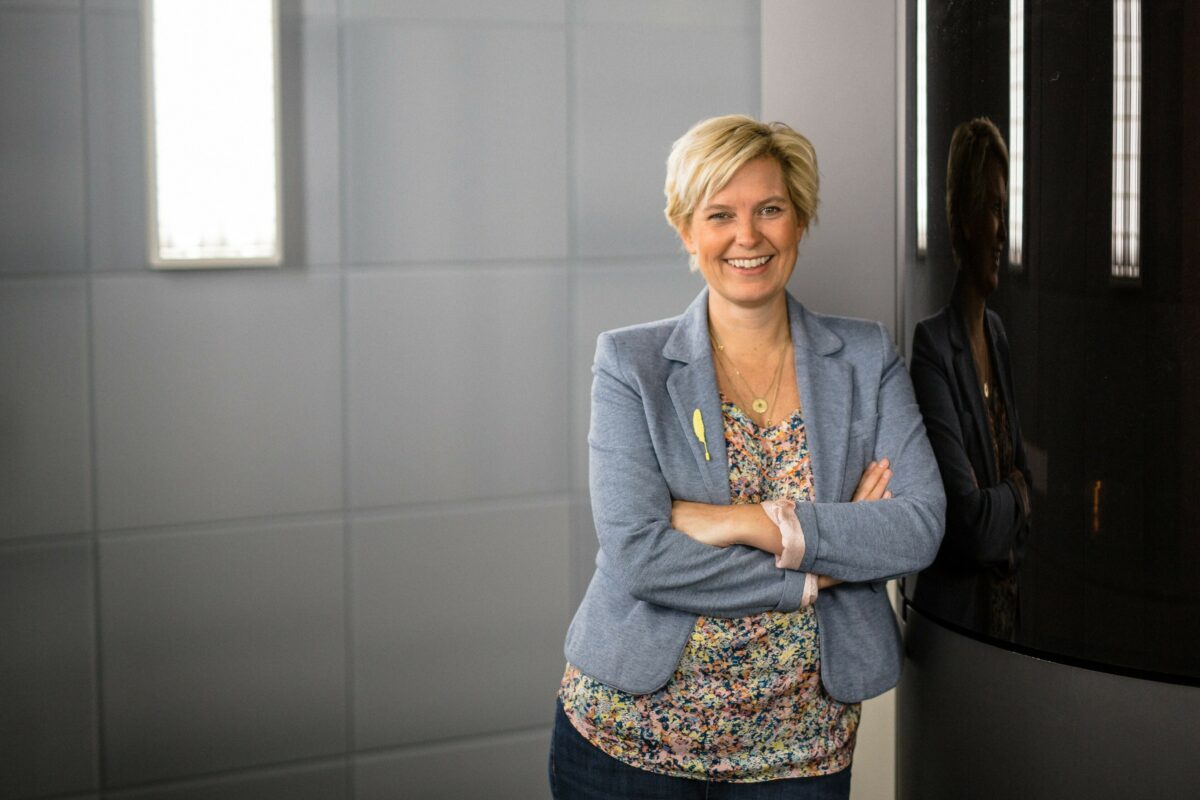
CO2 molecules land on the surface of the catalyst during CO2 hydrogenation. At a high pretreatment temperature, titanium atoms (brown) remain on the nickel (gold).
This article was first published on May 11th 2023, on the website of Utrecht University. Text by Moniek Verstegen
An international research team led by Bert Weckhuysen (Utrecht University) and Sara Bals (University of Antwerp) has shown that a promising catalyst for clearing CO2 becomes significantly more active and selective if its pretreatment is modified. The scientists visualized the mechanism underlying this concept with unparalleled precision. The results of the study will appear in the prestigious scientific journal Science on 11 May. Matteo Monai, Kellie Jenkinson and Angela Melcherts are the first authors.

Prof. Bert Weckhuysen
Cleaning up carbon dioxide or converting it into something useful is becoming increasingly common, for example in the energy and transportation sectors, where huge amounts of the greenhouse gas are emitted. Catalysts are necessary for such a cleanup process to proceed properly and quickly. In the case of CO2 hydrogenation, which is a widely used chemical reaction to clean up CO2, a nickel-supported titanium dioxide catalyst is used.
Better catalyst
In this study, the scientists show that the catalyst’s performance is highly dependent on the temperature at which it is prepared. The selectivity and activity of the catalyst were much better during CO2 hydrogenation at a pretreatment temperature of 600 degrees Celsius than at 400 degrees Celsius. Better selectivity is desirable because the catalyst provides fewer unwanted by-products. Improved activity results in a faster progression of the catalytic reaction. The researchers expect the same principle to apply to catalysts with metal oxides other than titanium oxide.

Prof. Sara Bals
Sliding layers
The team of scientists made the principle visible using advanced electron microscopy. And they did so with unparalleled precision: at the atomic level. They inserted a special nanoreactor, in which the catalytic process took place, into the microscope and were able to see exactly what happened to the catalyst. "During the process, you see the titanium atoms crawling onto the nickel like layers and coming off again," Bert Weckhuysen describes. "At a high pretreatment temperature, some titanium atoms remained on the nickel. At a low temperature, the layers of titanium atoms disappeared completely."
Video: Catalyst with pretreatment temperature of 600 degrees Celsius: titanium atoms (green) creep onto the nickel (purple) and move off during CO2 hydrogenation.
Old concept
Two chemical elements, such as nickel and titanium, interacting and forming a catalyst, is an old concept known as strong metal support interaction (SMSI). This study reveals for the first time what happens at the atomic level during this interaction. The sliding layers of titanium have never been seen before. "The new technique has made it possible for us to observe this with our own eyes," said Weckhuysen. "With, moreover, a very high resolution. We can count the titanium atoms on the nickel!"
Big puzzle
The international research team that worked on the study is extremely interdisciplinary. According to Sara Bals, this was critical to achieving the results obtained. "We used electron microscopy techniques that are generally difficult to combine with experiments in a nanoreactor," she says. "Researchers with different backgrounds and access to a variety of advanced techniques each laid out small pieces of a larger puzzle. Ultimately, these pieces combined led to the complete picture."
Publication
Restructuring of titanium oxide overlayers over nickel nanoparticles during catalysis
Science, May 12, 2023
Matteo Monai, Kellie Jenkinson, Angela E. M. Melcherts, Jaap N. Louwen, Ece A. Irmak, Sandra Van Aert, Thomas Altantzis, Charlotte Vogt, Ward van der Stam, Tomáš Duchoň, Břetislav Šmíd, Esther Groeneveld, Peter Berben, Sara Bals, and Bert M. Weckhuysen